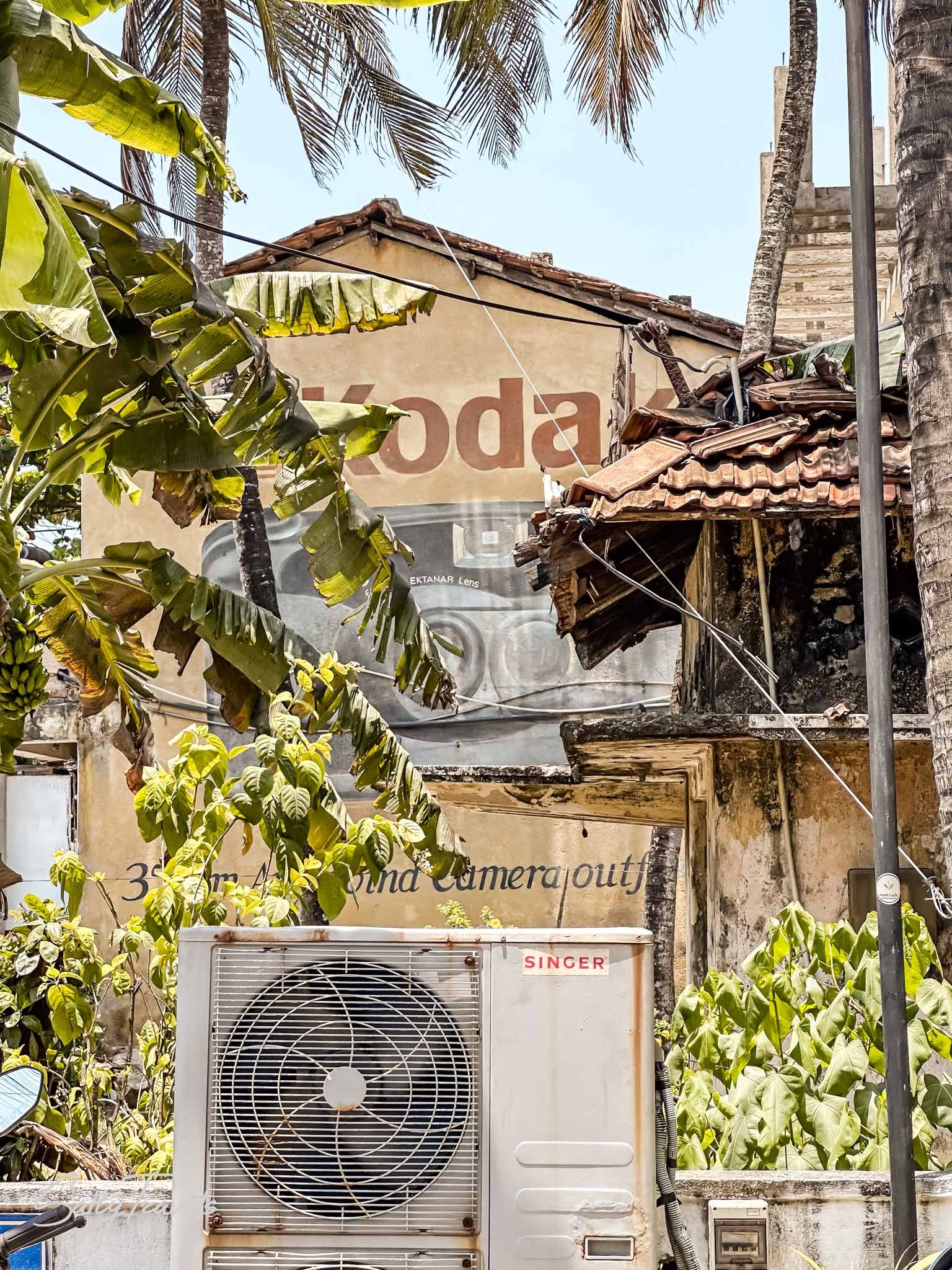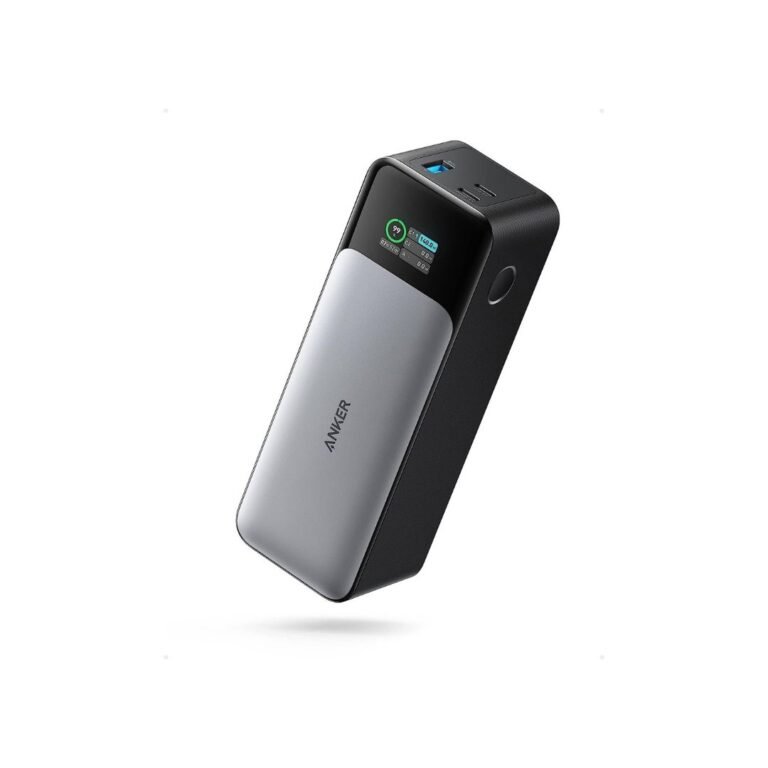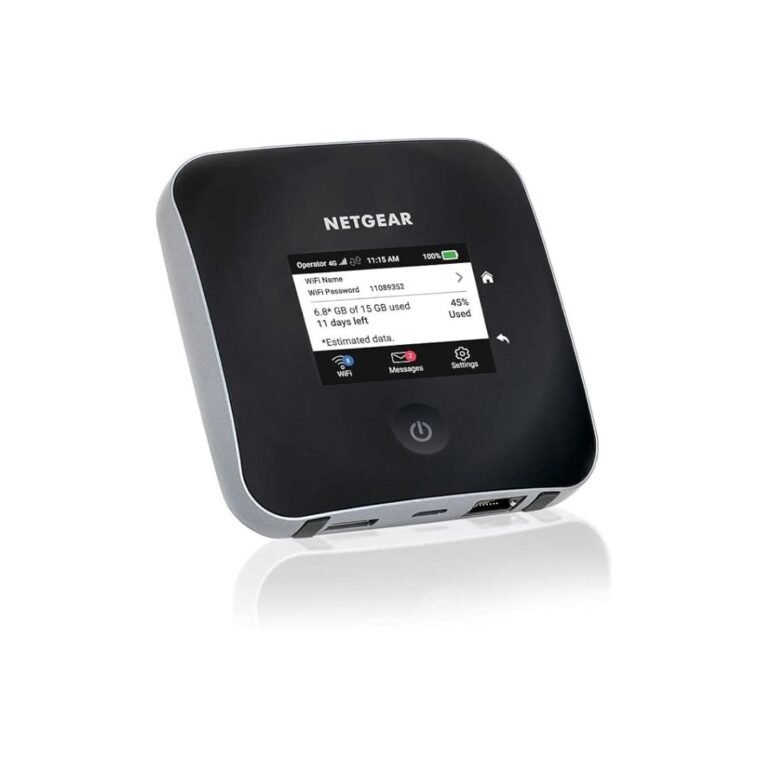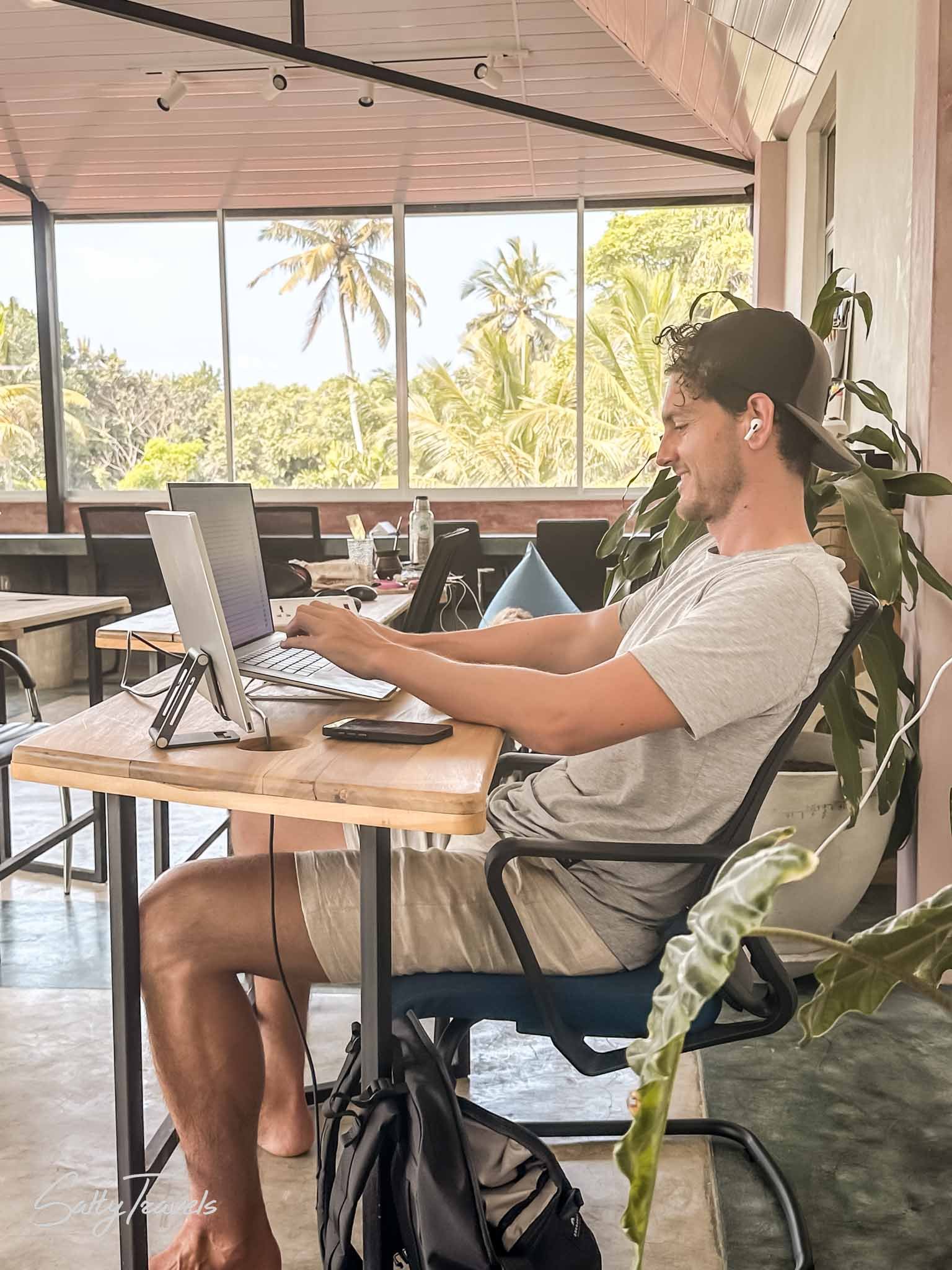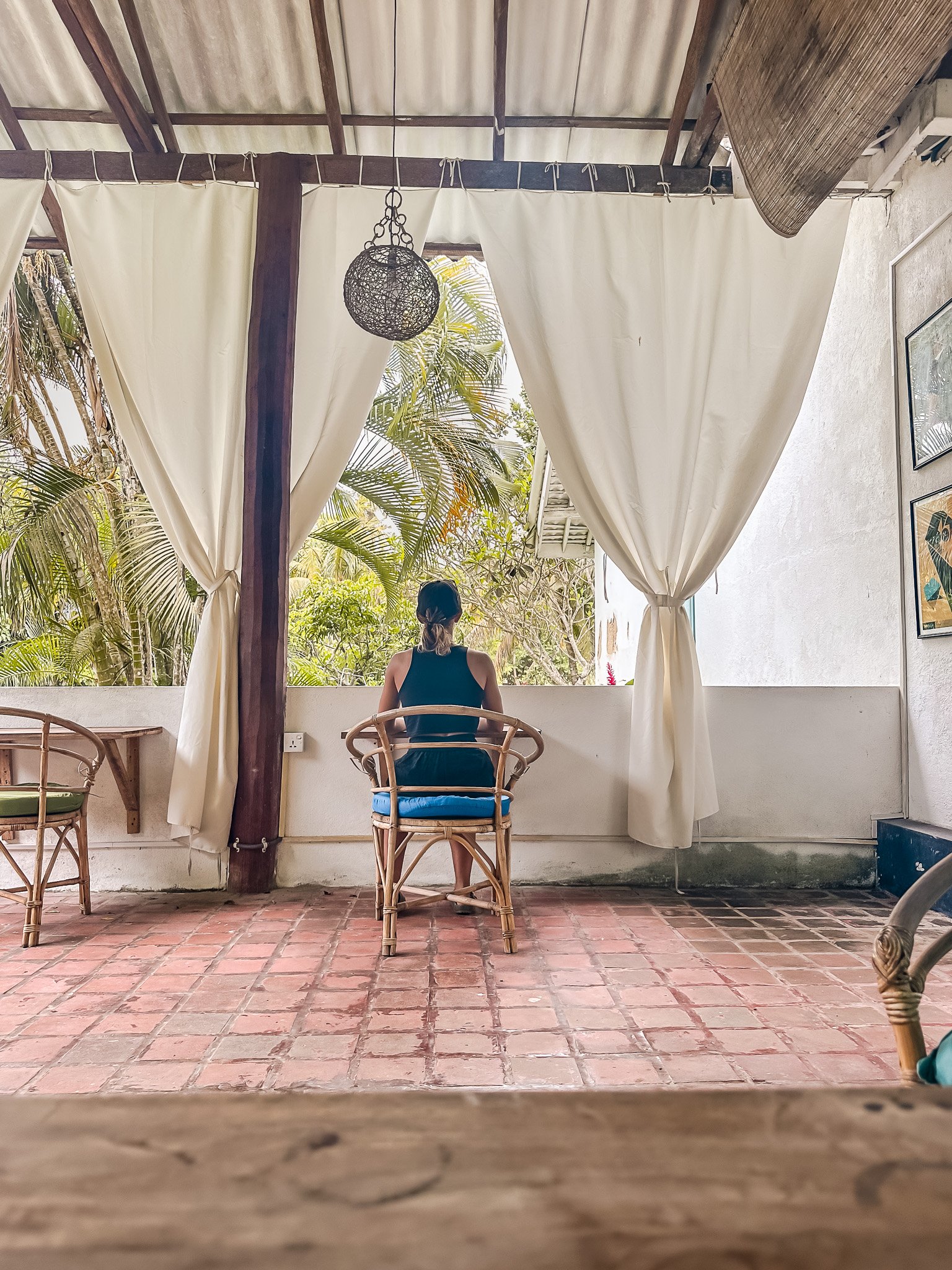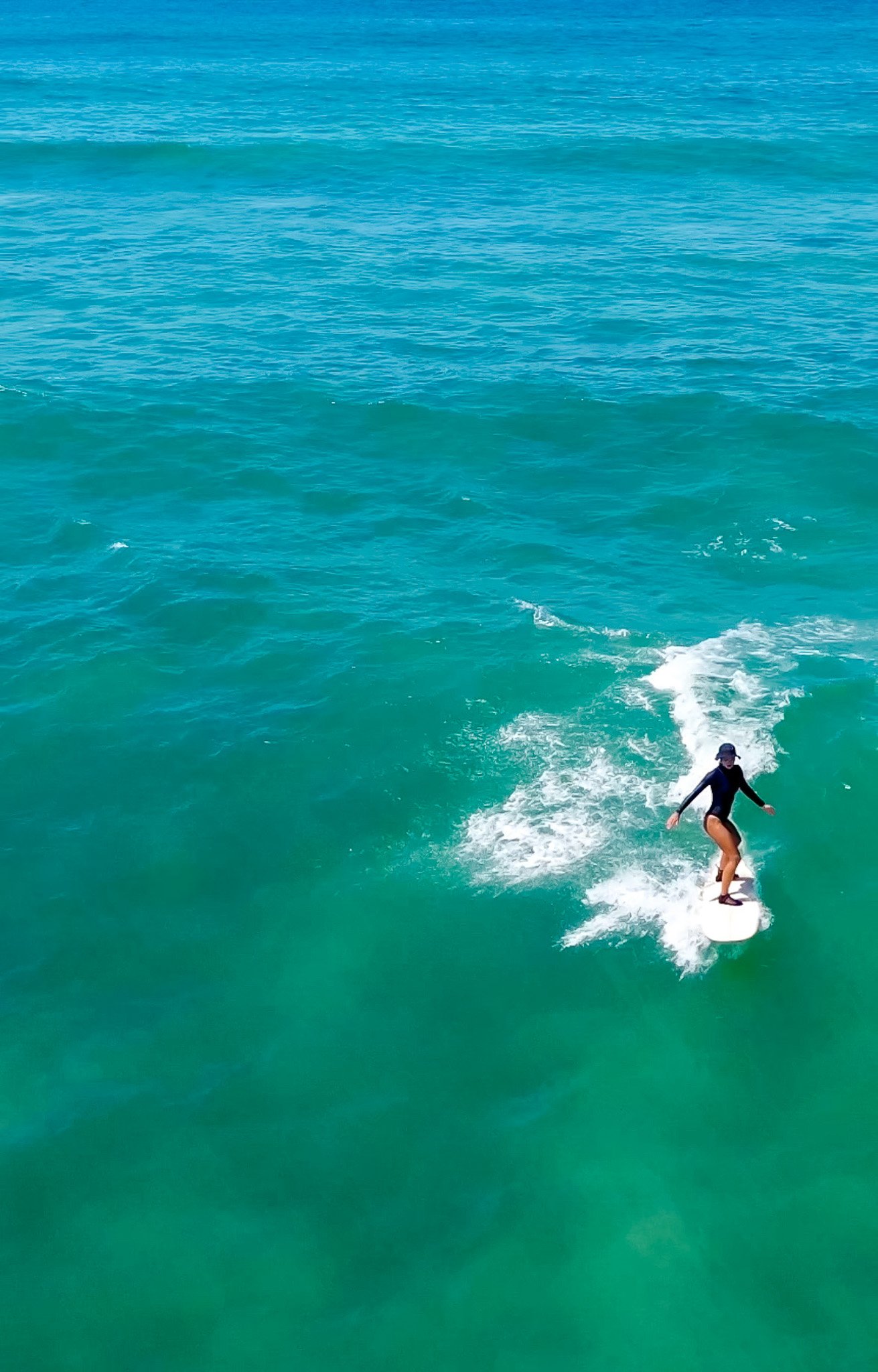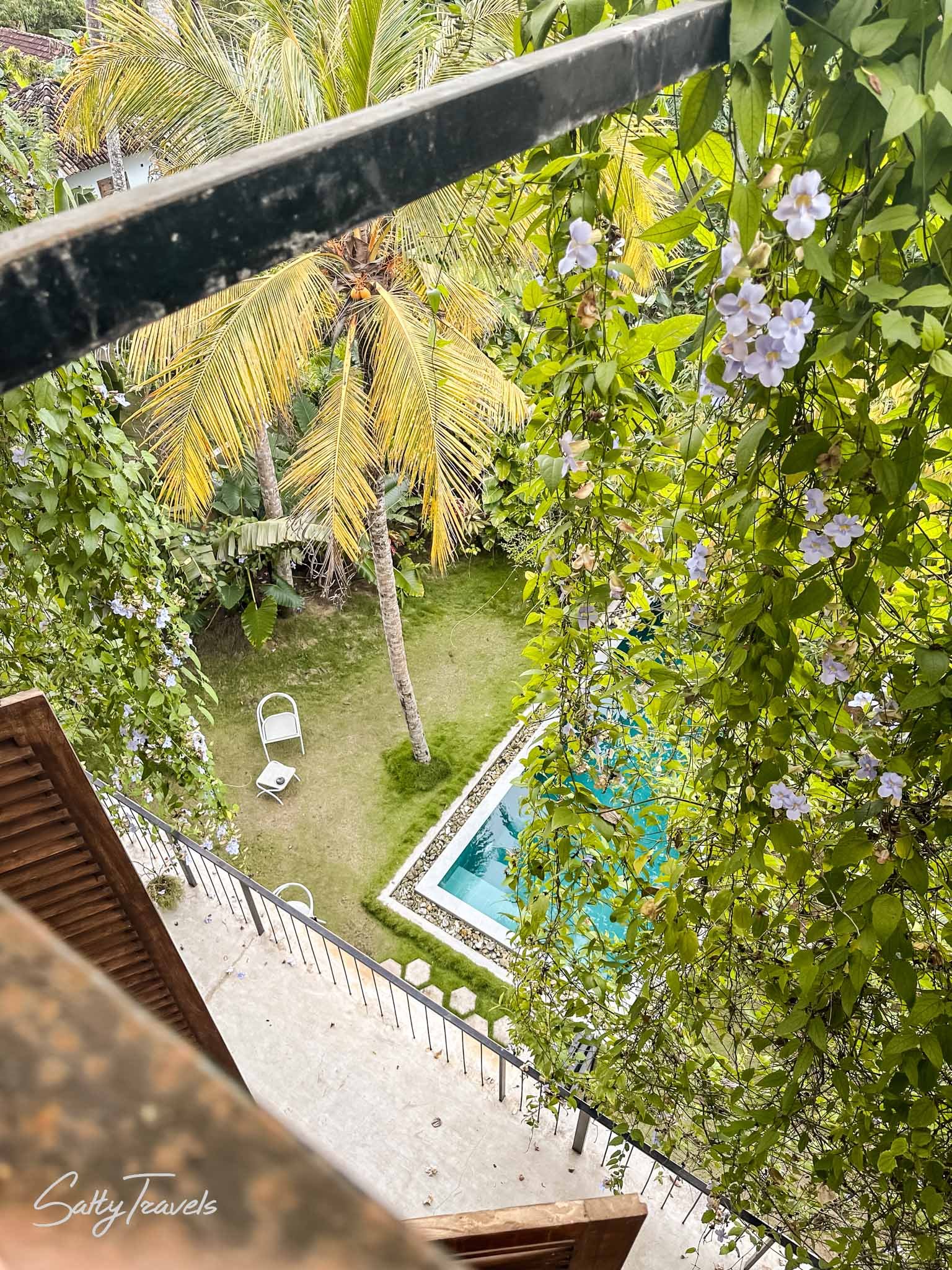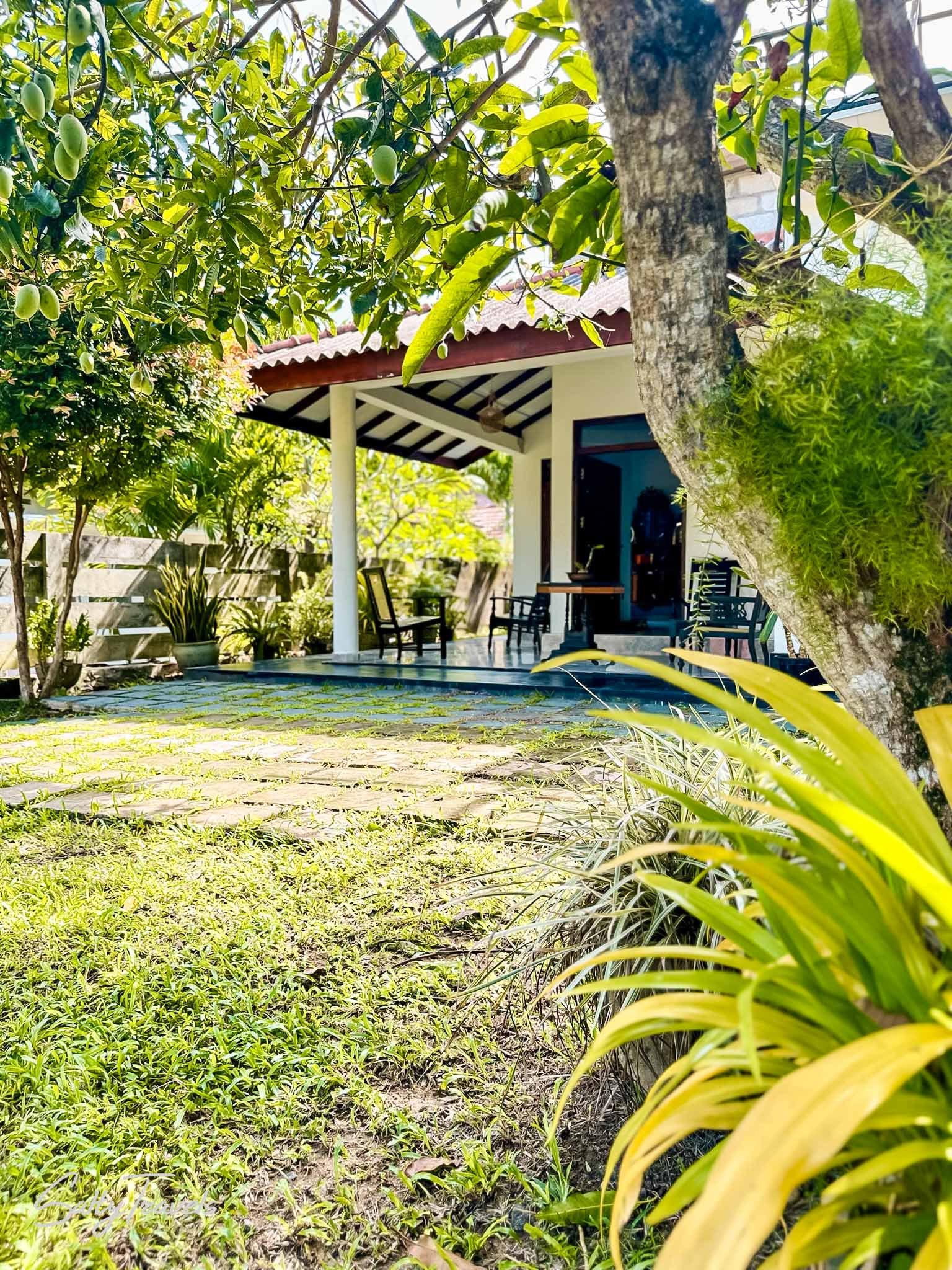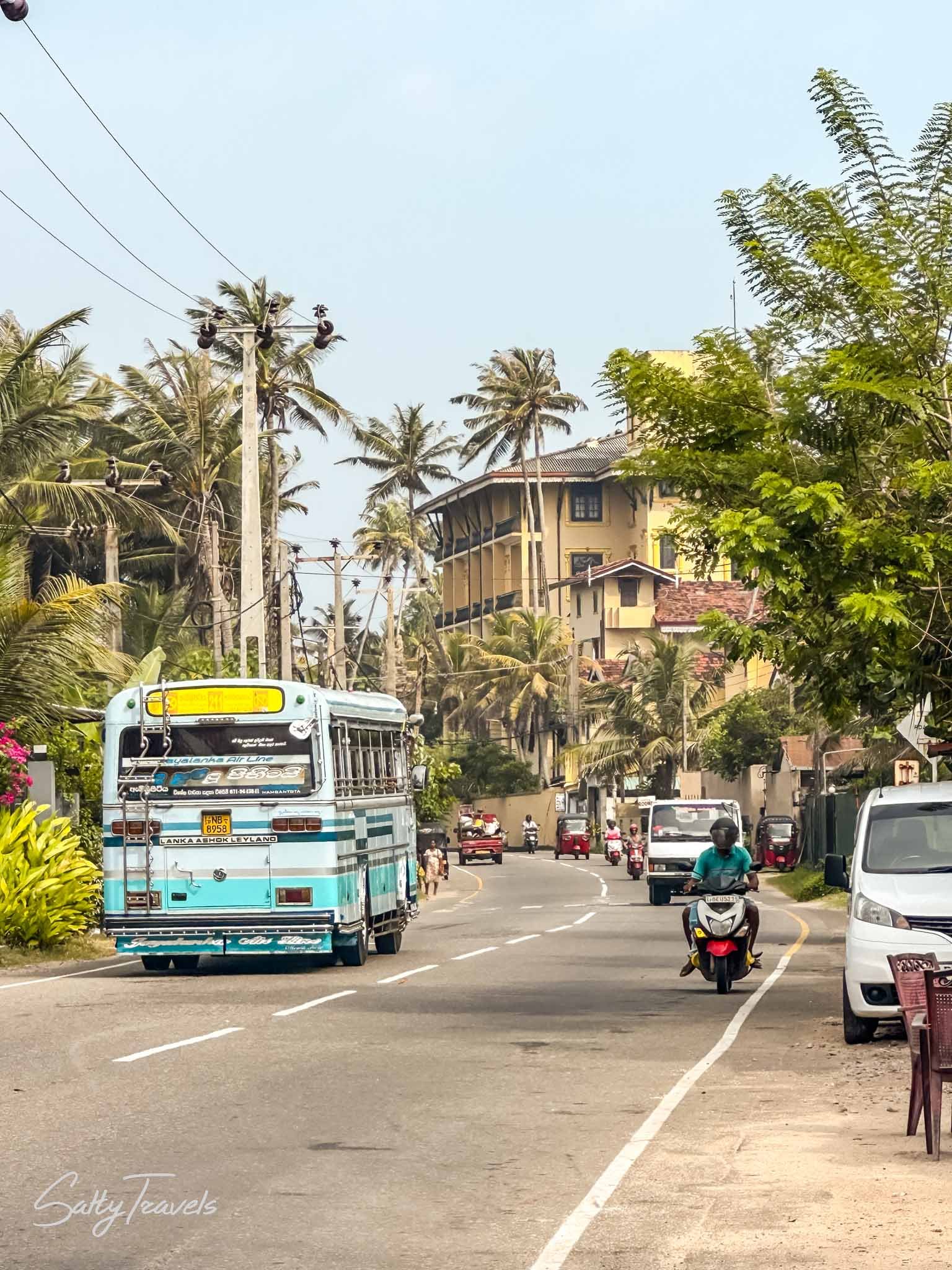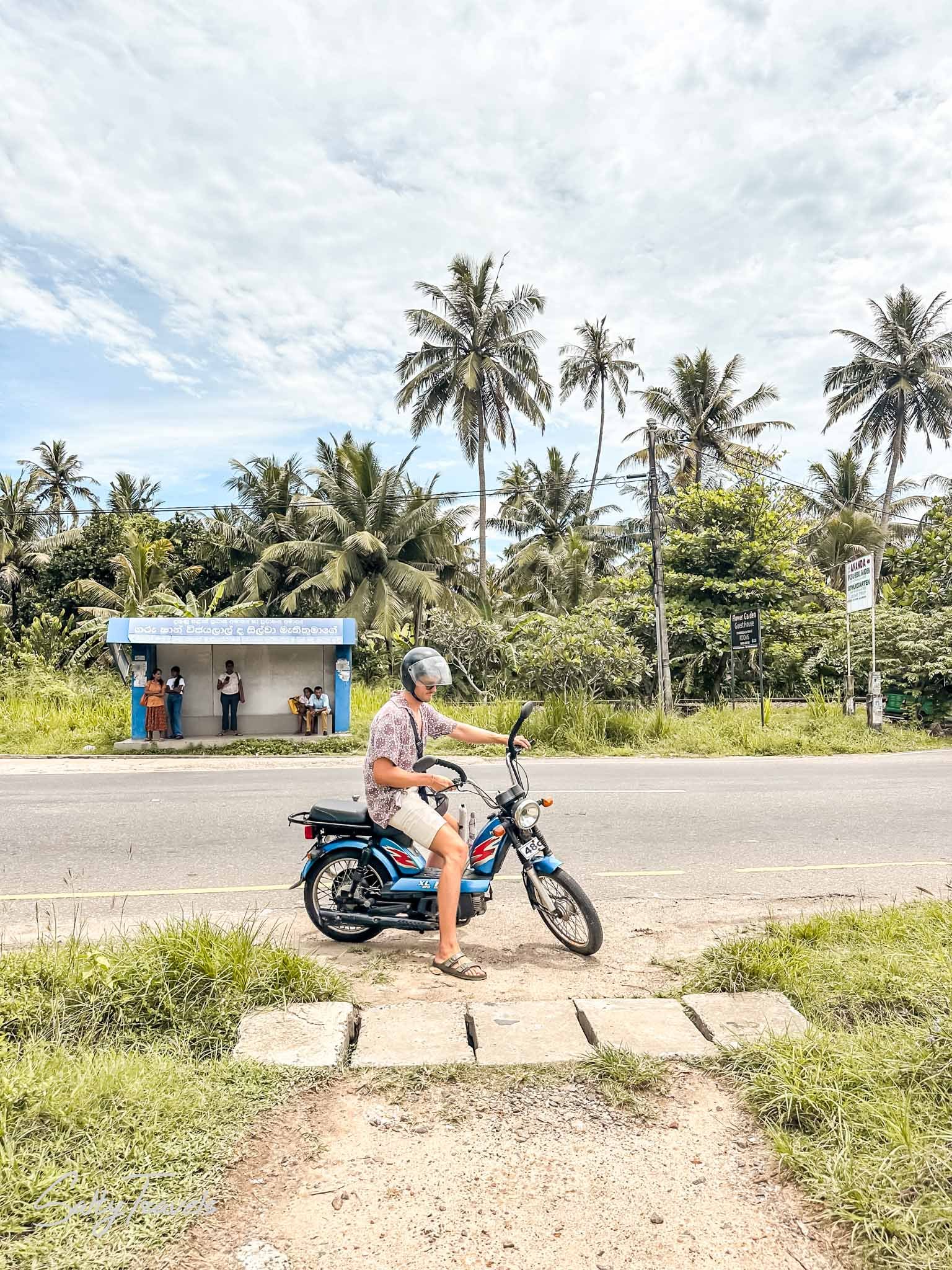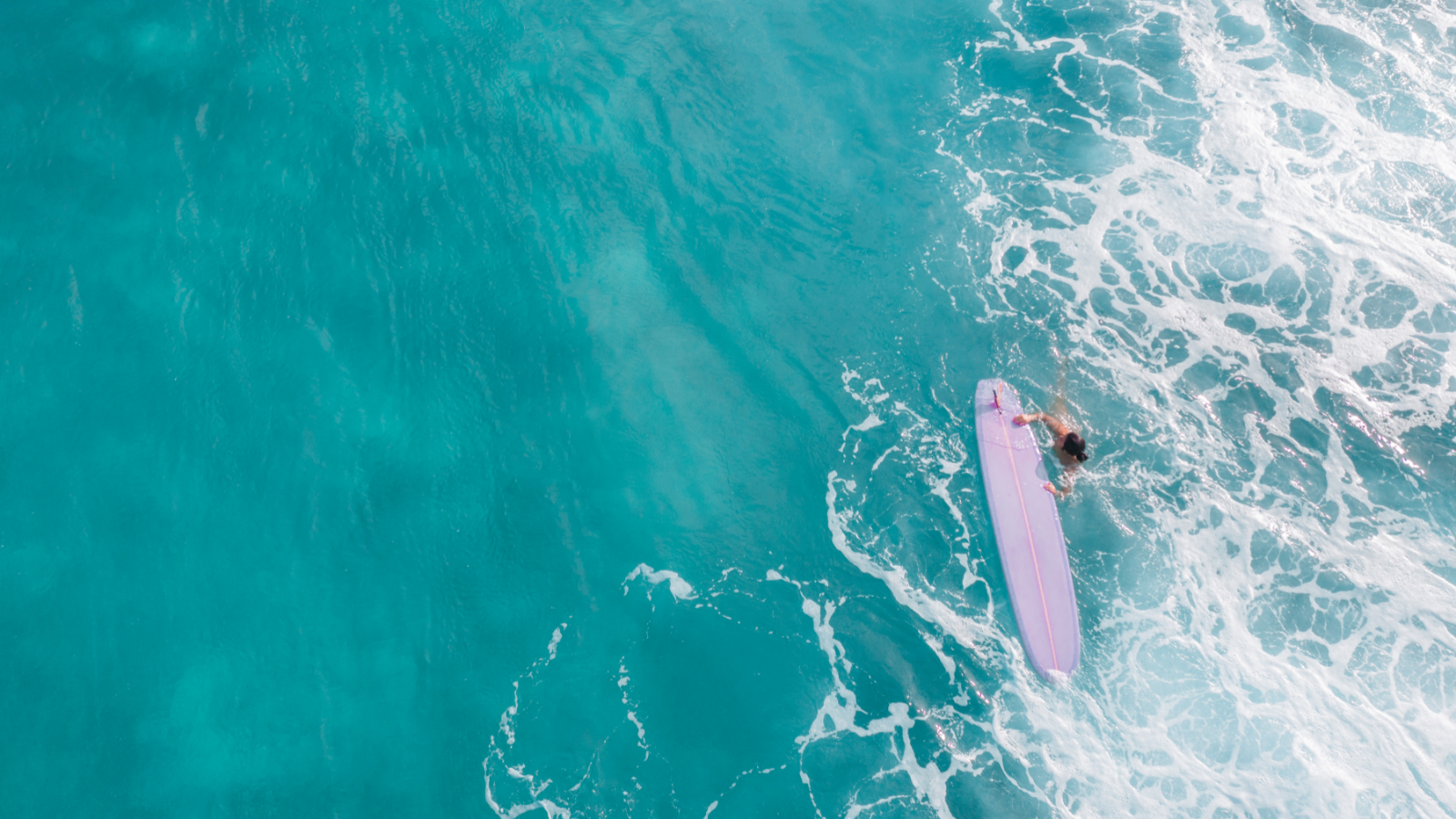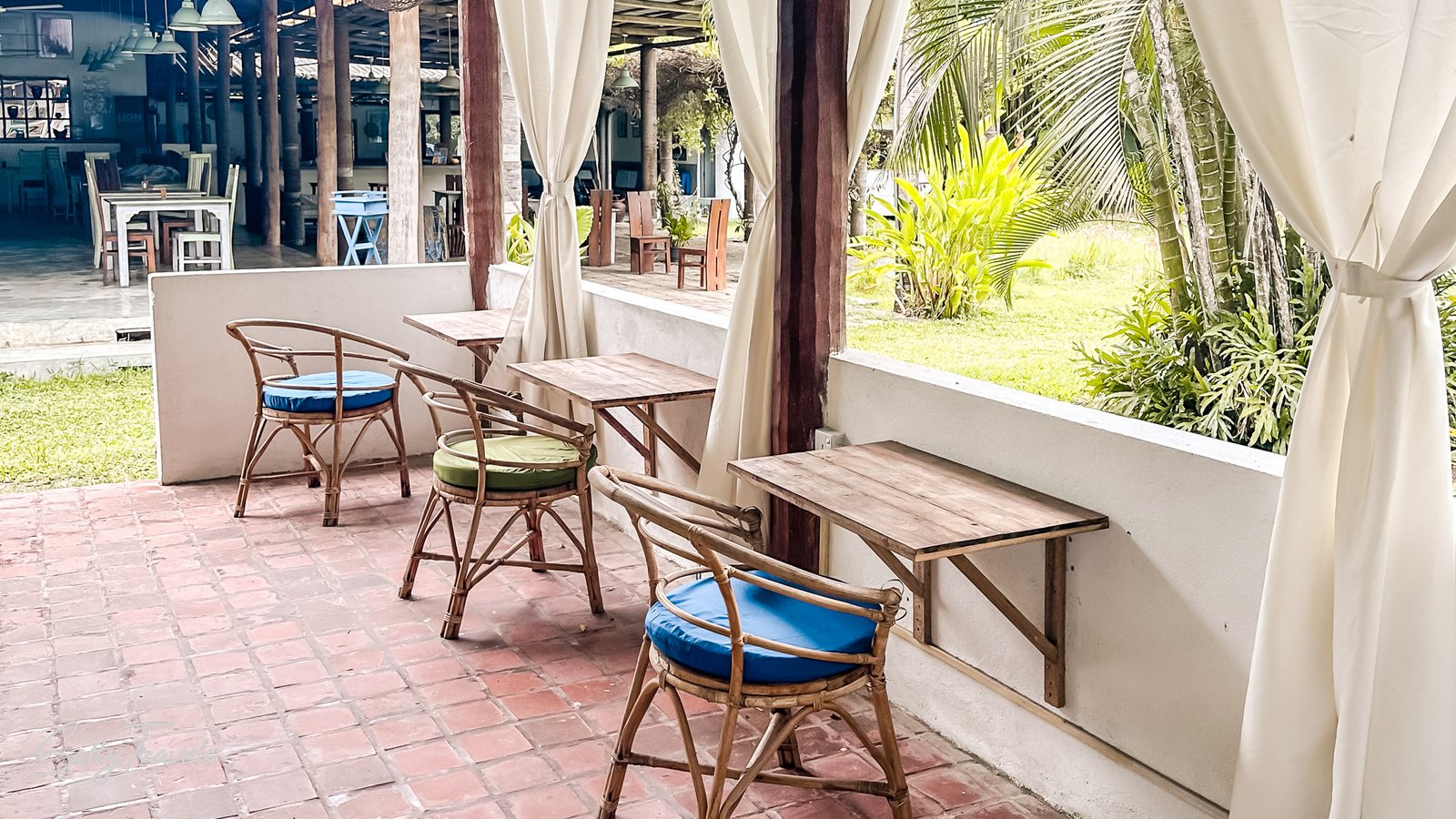When searching for our first winter escape as digital nomads to Asia, we had a clear checklist in mind: a comfortable time difference for working European hours, consistent surf, enough infrastructure to support remote work, wild nature, and a laid-back vibe without overwhelming crowds of tourists. While it felt very tempting to go to Bali, we decided against it because of how mainstream this island became and decided to go to Sri Lanka for 3 months. Was this a good decision?
If you’re planning to work remotely from this amazing island, and you are looking for tips for digital nomads in Sri Lanka, this comprehensive guide has everything you need to know. From navigating safety, visa requirements, and the political situation to understanding costs, finding accommodation, and dealing with power cuts, internet connection, and coworking spaces – I covered it all. Ready to plan your next digital nomad adventure?
What will you find in this article?
1. Visa for digital nomads in Sri Lanka
Digital nomads planning to stay in Sri Lanka typically apply for a tourist visa, which is initially granted for 30 days. It’s recommended to apply for an Electronic Travel Authorization (ETA) online before arrival for a hassle-free process, but a visa on arrival is also available. Keep in mind that visa regulations can change, so always check the latest updates on the official Sri Lankan immigration website.
Extension
If you want to stay in Sri Lanka for more than 30 days, you can apply for an extension. The short-term visit visa can be extended up to a maximum of 270 days from the date of arrival in three consecutive instances: 30 days on entry, 60 days for the first extension, and 90 days for the second and third instances.
Usually, applications for an extension should be submitted to the visa section of the Department of Immigration & Emigration (Head office) by visiting the department. However, for an extension of up to 6 months, you can apply online on the e-Visa extension website. If you are unable to use any of the above options, you can use the help of an authorized visa agency.
☀️ My experience: We got our visa online and extended it online as well for the whole 3 months of our stay. It went very smoothly except for the fact that getting the extension took longer than expected and we were in Sri Lanka for 2 days without a valid visa. If you want to avoid this kind of stress, apply for the extension as much in advance as possible.
2. Prices in Sri Lanka
If you talk to anyone who has recently been to Sri Lanka, you will for sure hear that Sri Lanka is expensive. At least this is what we heard from many friends before going there.
Indeed, in recent years, the prices in Sri Lanka rose significantly. I visited Sri Lanka for the first time in 2016 and back then it was a heaven for backpackers travelling on a low budget, often compared to Southeast Asia in terms of affordability. This changed mainly due to a big economic crisis in 2022 and the collapse of tourism during the COVID-19 pandemic. Prices for basic goods like fuel and rice have risen by 100% and more. To give you an example, a litre of petrol cost around 150 LKR in 2016 and approximately 350–400 LKR in 2024.
Considering that Sri Lanka is an Asian country with less developed infrastructure, it can be seen as expensive in comparison to other countries in the region. However, it can still be very affordable for digital nomads who are willing to embrace the local way of living more (e.g. renting a villa from the locals instead of a fancy co-living or changing avocado toasts for Sri Lankan rice and curry).
Daily costs for digital nomads in Sri Lanka
Here are a few exemplary costs of living for digital nomads in Sri Lanka.
- Accommodation: The price can be very different. You can get a whole two-bedroom local villa for €800-€1000 per month, but also a room in a co-living for €1200-€1600 per month.
- Food: A meal at a local restaurant costs around €2–€5. Western-style cafes charge €7–€15 for meals like avocado toasts, bowls, pizzas, or salads.
- Transport: Public transport (train/bus) is extremely affordable (€0.50–€2). Tuk-tuks typically charge around 50–100 LKR (€0.14–€0.28) per kilometre.
- Co-working spaces: Prices vary by location, with examples including Outpost in Weligama (€180/month) and Nets in Ahangama (€150/month).
Price vs. quality
Although the prices have risen, this doesn’t mean the quality and infrastructure have too. Seeing some prices similar to or only slightly lower than the European ones, it’s natural to expect a similar quality – however, this is mostly not the case. Sri Lanka is still catching up with many things, especially when it comes to specific needs and expectations foreigners have. You can see this especially when looking for accommodations, renting out scooters/surfboards, or having to deal with power cuts.
ATMs
Accessing cash in Sri Lanka is straightforward, with ATMs readily available in cities and popular tourist areas. Most machines accept international debit and credit cards, including Visa and Mastercard. That said, withdrawing money often comes with fees: local banks charge 300–500 LKR (€0.85–€1.40), and your home bank might add foreign transaction fees. To save on costs, it’s a good idea to withdraw larger amounts when possible, but note that most ATMs limit withdrawals to 40,000–60,000 LKR per transaction.
☀️ My experience: If an ATM doesn’t work, don’t stress – just try another bank. Some machines handle foreign cards better than others. From our experience, Commercial Bank, Sampath Bank, and People’s Bank were reliable with our German DKB card, which worked at every ATM we tried. On the other hand, our Revolut card didn’t work at People’s Bank, so having a backup card is always a smart move.
Currency
The Sri Lankan Rupee (LKR) is the official currency. As of December 2024, 1 Euro equals approximately 350-400 LKR, though rates fluctuate.
3. Internet connection
Sri Lanka has decent internet infrastructure, particularly in urban areas and popular digital nomad or touristic hubs – so it’s definitely possible to work remotely from the island. You just need to prepare well and keep a few things in mind.
Internet speed
With an average speed of 20–50 Mbps, the internet in Sri Lanka is usually sufficient for remote work and video calls. We are both freelancers with demanding full-time schedules, including many video calls, and download and upload of files, and we had no issues with the internet in our villa in Ahangama. However, when looking for accommodation, always ask for a speed test. This way you can make sure you will have access to good internet.
When choosing accommodation, it’s also important to ask if the house has a fiber optic connection. If not, ask the owners if they could provide it. Keep in mind that even if an accommodation has fiber optic internet, the internet might still be slow due to a low-speed package.
☀️ My experience: We needed to ask the owner of our villa for both: providing a fiber optic connection and buying a better package – both worked without any issues since the owner knew that we would stay for 3 months. It works similarly with all other improvements (e.g. providing office furniture) – mostly they are willing to do them if you plan to stay for a few months.
Mobile data
Mobile data is affordable and widely available in Sri Lanka, with providers like Dialog and Mobitel offering 4G coverage across much of the island. Monthly data packages range from €5–€20 and typically include 10–40 GB of data, depending on the provider and package.
☀️ My experience: We used Dialog because our friends recommended it to us, saying that it has much better coverage in the south than Mobitel. We bought one card each for our mobile phones + one for the router in case we need the internet to work. They have two stands at the exit of the airport, so you can buy a SIM card right after landing. In February 2024, we paid 2450 LKR (€6.50–€7.00) for 50 GB.
4. Power cuts in Sri Lanka
When preparing for our digital nomad trip to Sri Lanka, our biggest worry was the power cuts. Many of our friends told us that it was still a real problem on the island. These outages, often caused by fuel shortages, rising energy demand, and the country’s reliance on outdated infrastructure, could occur a few times a week or only once every two weeks – the frequency varies greatly depending on the location. They can last anywhere from a few minutes to several hours. While major cities and tourist hotspots (including restaurants, hotels, and coworkings) often have backup generators or solar panels, smaller towns or rural areas may not have such solutions.
Power cuts in the Ahangama area
When we first arrived in Ahangama, power cuts were still a part of daily life. On our first Sunday, we experienced an 8-hour outage (from 9:00 to 17:00), which was a bit of a shock. Thankfully, that was the only full-day power cut we faced. Afterwards, the power cuts were much shorter, lasting only 15–30 minutes and happening just 3–4 times over our entire three-month stay.
In March 2024, we noticed significant construction work on the electricity supply system in the area. New electricity lines have since been installed, which may help. It’s definitely a step in the right direction, although it’s important to keep in mind that power cuts in Sri Lanka are also caused by issues beyond infrastructure.
Tips on how to prepare for power cuts
Since power cuts can happen during the week, during working hours, and they can last up to several hours, you need to make sure that you have an alternative solution to be able to continue working. Here are a few tips that will save you a lot of headaches:
- Coworking space with AC and solar panels: It’s a good idea to find a coworking space close to your accommodation that has solar panels (an alternative energy source) and an AC (you will need one since the one at your home won’t be working). This could be your go-to place in case of power cuts. We chose Nets during our stay in Ahangama. You can read more about our experience with coworking spaces in Ahangama here.
- Power bank: It’s a good idea to invest in a big power bank, one that can charge your laptop. We bought this power bank, which has a very big capacity, as we wanted to make sure both our laptops can be charged at the same time. It worked great, and now it travels with us everywhere we go.
- Wi-fi router: Take a wi-fi router with you on your digital nomad trip to Sri Lanka. You can buy a local SIM card and use it as an alternative internet source. We took with us our Netgear router to make sure we have internet at all times. It worked great for the two of us during power cuts.
- Power cut app: There is an app in Sri Lanka that shows when the power cuts will happen. From our experience, it was reliable only 50% of the time – better than nothing. 😉 You can access it under this link. If you want to use it, the owner of your accommodation will need to share his account number with you.
- Portable light: If you want to stay at home during power cuts and plan to have calls in the evening, remember to take a portable light with you. The sunset in Sri Lanka is at 18:00, which is the middle of the working day in Europe.
5. Destinations for digital nomads in Sri Lanka
Sri Lanka offers several destinations that are particularly appealing to digital nomads due to the availability of coworking spaces and a vibrant community of people from around the globe. Most of the places visited by remote workers are in the south of the island and offer access to good surf spots. What differentiates them is the size, level of infrastructure, and how touristy they are – which means everyone can find a spot serving their needs.
Weligama
Weligama is also located in the south in a big bay with a wide and long beach. Compared to Ahangam, it can be described rather as a town, which means it has a bit more to offer in terms of shops and services.
- Its holiday infrastructure, including a Marriott hotel, attracts many tourists. However, it’s also a popular spot among digital nomads looking for a more vibrant vibe.
- You can surf along the whole bay, and there is a coworking space called Outpost.
- Minus: Since Weligama is a bigger town and a fishing spot, the big beach in Weligama is not very clean with a lot of trash coming from the town and the fishing boats as well as stray dogs living on it. There is also an ugly river flowing into the ocean. Of course, the bay is huge, so you won’t feel any of this at first sight, but seeing this doesn’t make you feel comfortable with the water quality. Despite its size, the surf spots in the bay can also get very crowded, with hundreds of beginners bumping into one another.
☀️ My opinion: for me, Weligama is too touristy, with many people coming here for vacation. It has a less authentic vibe than other smaller villages like Ahangama or Midigama.
Ahangama
Ahangama is located in the south of the island, around 20 minutes drive from Weligama. It has become very popular in recent years and is growing rapidly, adapting more and more to the needs of digital nomads with its fancy cafes, boutiques, and yoga studios.
- The area offers many surf spots along the coast, and it already has two proper co-working spaces (FocuseHub and Nets).
- It’s smaller than Weligama and not so focused on parties, so it’s a good fit for people looking for a calmer environment.
- It is also less touristy than Weligama since there is a limited number of sandy beaches and no mainstream holiday infrastructure (only smaller boutique hotels), which gives it a more authentic vibe.
- Minus: one big downside of Ahangama is the super busy main road and the fact that all surf spots and most restaurants and shops are located on it. In the beginning, every drive feels like a life-threatening experience, but with time, you get used to this. Because of that, it’s also not really possible to go anywhere for a walk since there are no sidewalks.
☀️ My opinion: We decided to stay in Ahangama because we were looking for a less mainstream place that would be more focused on digital nomads than tourists. And since the infrastructure of Ahanagma increased significantly in the last year, it offered enough coworking spaces, restaurants, shops, etc. to comfortably live there.
Midigama
Midigama is located between Weligama and Ahangama. It’s a small and peaceful village partially hidden in the jungle and partially stretching along the coast.
- It’s smaller than Ahangama, and it’s the perfect place for digital nomads seeking a slower pace.
- Known for its excellent surf spots like Lazy Left and Right or Rams, it’s also popular amongst surfers.
- While it lacks dedicated coworking spaces, its proximity to Weligama and Ahangama ensures easy access to more developed facilities.
☀️ My opinion: Midigama could be a great alternative to Ahangama if you are looking for an even more peaceful location and great surf.
Hiriketiya
Hiriketiya is a very cute village with a small bay with a sandy beach where you can surf.
- It feels more like a destination for holidays or shorter stays, but it’s also popular amongst digital nomads looking for a very chill beach vibe.
- It offers some nice restaurants, coffee places, and shops, as well as one coworking space called Clics – Coliving & Coworking.
- Minus: The surf spot can get crowded very fast since the bay is super small, and some things might be more expensive (e.g. sunbeds on the beach) since it’s a holiday destination.
☀️ My opinion: Hiriketiya is definitely worth a short visit even if you choose a different place to stay as a digital nomad in Sri Lanka. We spent a few days there and we really enjoyed it. Check out this article to see attractions we can recommend.
Arugam Bay
Arugam Bay is located on the east coast for a change and is popular from April to October (opposite to the south coast) because of the weather and the surf conditions.
- Once a small and chilled town, it has turned into a party location filled with backpackers and surfers.
- It offers at least one coworking space: Nomads Coworking Space.
- It has a different vibe than the Buddhist south, partly due to its stronger Muslim influence.
☀️ My opinion: We never visited Arugam Bay because we decided to stay for the whole period in Ahangama (even in April when the rainy season started and many people were moving to the east).
6. Is Sri Lanka Safe for Digital Nomads?
In short, yes, Sri Lanka is generally safe for digital nomads, especially in popular areas like the south coast. We spent several months living and working remotely from Ahangama and felt welcome and secure most of the time. However, we also actively made sure that we stayed safe for several reasons. Sri Lanka is not as carefree as other destinations, like Bali, so it’s worth knowing a few things in advance to avoid unnecessary stress. The traffic is super intense and dangerous. House robberies are happening from time to time. On the street, you will find millions of stray dogs, and rabies is still a thing in Sri Lanka. And if you are traveling solo as a woman, you definitely need to take caution and avoid certain situations.
Sri Lanka is generally a safe place health-wise, but there are a few things worth keeping in mind – especially if you’re staying for a longer time. It’s important to make sure your routine vaccinations are up to date, that you protect yourself against mosquito-borne illnesses, and pay attention to food hygiene. With just a few simple habits, it’s easy to stay healthy and enjoy your time without any unwanted interruptions.
💡 Related article: This is just a short overview of the safety situation in Sri Lanka. If you want to know more about my experience and get some useful tips on how to stay safe in Sri Lanka, check out this article: Is Sri Lanka Safe for Digital Nomads? A Realistic Look.
7. Coworking spaces in Sri Lanka
Sri Lanka is still quite a new destination on the digital nomad map, so the coworking infrastructure is still in a development phase. As of 2025, the island offers only a few proper coworking spaces in the south (e.g. Weligama, Ahangama) and east (Arugam Bay), as well as in Colombo. There are also some cafes and restaurants that offer coworking rooms or tables.
However, the infrastructure is still significantly weaker than in other digital nomad destinations like Bali or Chiang Mai. While Bali offers a wider variety of coworking spaces with luxurious amenities and community-building events, Sri Lanka provides a more laid-back vibe and a simpler infrastructure.
- Facilities: Proper coworking spaces usually offer basic office furniture, reliable internet, AC, and some call booths. Some, like Outpost in Weligama or Nets in Ahangama, provide, from time to time, community events and networking opportunities.
- Solar Panels: Given the frequent power cuts, many coworking spaces have backup generators or solar panels to ensure uninterrupted work.
- Costs: Prices for coworking spaces vary, with monthly packages typically ranging from €120 to €200, depending on the location and amenities.
💡 Related article: If you are planning to live in Ahangama, check out my article about coworking spaces in Ahangama. During our stay in Sri Lanka, I visited many of them and collected some useful information for digital nomads.
8. Lunch/dinner breaks
While working remotely from Sri Lanka, we found it a bit complicated to organise food during working hours. There is no food delivery app in the Ahangama area, and the local restaurants usually need a lot of time (up to 1h) to serve food since they are preparing everything fresh. We found some restaurants that offered delivery (e.g. Manori’s kitchen), but there were not many of them back in 2024. However, we were super lucky to have a host family and a neighbour who cooked for us from time to time. If you face a similar issue, it’s a good idea to ask your host or check around if anybody in your neighbourhood would be happy to deliver such a service.
💡 Related article: If you want to find out our favorite restaurants in Ahangama, check this article: Best Restaurants in Ahangama – Local Favourites and Secret Spots You’ll Love
9. Time zone in Sri Lanka
Sri Lanka operates on Indian Standard Time (IST), which is CET+4:30 or GMT+5:30 during winter time in Europe and CET+3:30 or GMT+4:30 in the summer time. If you are a digital nomad working European business hours in the CET time zone, this means there is a time difference of +4.5 hours in winter time and +3.5 hours in the summertime (Sri Lanka has no time change). This is a very easy-to-manage time difference since it doesn’t require you to start working very early (like in Mexico or Brazil) or very late (like in Indonesia) and is a big advantage for digital nomads in Sri Lanka.
Advantages
The time zone can work well if your workday overlaps with European business hours in the afternoon or evening, giving you mornings to surf or explore. If you usually start working at 9:00 CET in Europe, this means you will start working at 13:30 Sri Lankan time (during winter time) or 12:30 (during summer time).
Challenges
You might need to work late in the evening to match the European end of business. If you usually work until 17:00 in Europe, this means you will work until 21:30 in Sri Lanka (during wintertime in Europe) or 20:30 (during summertime in Europe) – which isn’t bad if you consider lower temperatures in the evenings. If possible, it’s a good idea to discuss flexible work hours with your employer or clients to ensure a balanced routine. For example, you could agree on starting 1h earlier in exchange for finishing one hour earlier (CET: 8:00-16:00 = Sri Lanka 12:30-20:30 during winter time).
⚡️ Tip: You can check the exact time difference each month here: https://www.worldtimebuddy.com/
10. Limited or no availability of certain products
While Sri Lanka adapts more an more to the needs of foreigners, when we visited it was still either hard or very expensive to get some specific products – basically any Western products that are not typical in Sri Lanka. So, if you visited Bali before and fell in love with how easy it was to feel like back home, it’s better not to expect the same level of comfort in Sri Lanka – otherwise, you might be disappointed. Some examples include:
- Oat milk (one with good ingredients) – we replaced it with coconut milk, which is widely available in Sri Lanka
- 100% nut butters – sometimes I found 100% peanut butter in Wijitha Sahana Food City. Another option is to order from this local family via WhatsApp. A friend of ours taught the lady how to make nut butters and helped her to make a business out of it.
- Coffee – Sri Lanka is definitely not a coffee country. They usually drink and farm tea, so coffee is mostly an imported product. We found some reasonably priced Lavazza coffee GLOBAL SHOPPING in Weligama. You can also get good coffee in Cactus.
- Good sunscreens – we took enough sunscreen with us from Europe, and I would advise you to do the same if you value high-quality cosmetics and want to take proper care of your skin. We heard stories about people getting really bad sunburns after using sunscreens available in local shops.
- Office furniture – if you are looking for a desk, I think the easiest and cheapest is to order one from a carpenter. We asked our host for help with this and agreed that we would share the cost 50/50 since he will keep the desk after we leave.
- any surfing-related stuff (e.g. wax, repair kits, etc.) – many surfing-related products are still hard to get or very expensive so it’s best to bring your own stuff.
11. Surfing in Sri Lanka
Sri Lanka is a paradise for surfers of all levels. With consistent waves year-round (half a year southwest part of the island and half a year southeast) and a variety of surf spots for beginners and advanced surfers, the island has become a global surf destination. The waves in Sri Lanka are much more gentle and forgiving than in the Atlantic (e.g. Portugal) or in Bali, which makes them great for beginners and intermediate surfers as well. Advanced surfers will find some heavier, steeper, and faster waves in Sri Lanka as well, but it’s not what the island is famous for. 😉
The surf scene is divided into two coasts: the southwest and the southeast coast, each working in different months of the year. The surf seasons match with the dry season, which means that:
- the southwest (incl. Weligama, Midigama, Ahangama, Hiriketiya, etc.) works well from November to April
- the southeast (Arugam Bay) works well from April to October.
💡 Related article: I’m an intermediate surfer leaning toward longboarding, and I had a lot of fun surfing the waves around Ahangama. I wrote a separate article about this, which includes my favourite surf spots in Ahangama and around as well as some tips about surfing in Sri Lanka. Check it out: Surfing in Ahangama: a Guide for Longboarders and Intermediate Surfers
12. Best times to visit Sri Lanka
Sri Lanka’s tropical climate guarantees warm air and water temperatures. With its unique geography and coastlines exposed to different directions, you can visit the island all year round chasing the sun and escaping the rain. And when the south gets too hot, you can always enjoy the cooler climate in the hill country.
Dry season
The dry season is considered the best for most travellers. During this time, you can expect warm temperatures, plenty of sunshine, and minimal rain – perfect for outdoor adventures and working in scenic co-working spaces. Just don’t forget your sunscreen, as the tropical sun can be intense!
- December to March: The weather is best on the west and south coasts as well as in the hill country.
- May to September: The weather is best on the east coast.
⚡️ Tip: The months right before and right after the dry season (e.g. November and April on the south coast) are also a time to consider if you don’t like crowds and don’t mind a bit of rain. We stayed in Ahangama for the whole of April and enjoyed this time the most due to more swell and fewer crowds.
Temperatures
Average temperatures usually range from 26–32°C in coastal areas. However, be prepared for a real-feel temperature of 38-40°C on some days (which is super hot!). This is what we experienced during our stay in Ahangama from February to April 2024, and we were very surprised by how hot it was there. As you can imagine, working without AC was not an option, and outside activities needed to be limited during noon.
In contrast, hill country areas like Nuwara Eliya or Ella offer cooler temperatures, often ranging between 15–20°C, providing a refreshing escape from the heat. When we visited, we were surprised at how cold it was there – locals in Nuwara Eliya were even wearing winter clothes! Make sure to pack some warm (long-sleeve) layers if you plan to explore this region.
13. How to find accommodation for digital nomads in Sri Lanka
Finding accommodation in Sri Lanka as a digital nomad for 2-3 months can be a challenging task, especially if you are looking for a high-end, European-style place. It seems that the real estate market in Sri Lanka hasn’t had the time to adapt to the needs of digital nomads yet. Because of that, you mostly need to choose between modern but very pricy villas owned by foreigners or much cheaper and simpler places owned by the locals. What’s missing are the options in between. We were struggling to find reasonably priced accommodation for quite some time and finally decided on a villa owned by a Sri Lankan family.
Here are some tips to help you find accommodation in Sri Lanka:
Co-living spaces
Many digital nomads opt for co-living spaces, especially in popular hubs like Weligama, Ahangama, and Hiriketiya. These spaces often include Wi-Fi, community activities, and sometimes even co-working areas. However, they can be quite pricy. We saw a room at Colive in Ahangama, which, after a discount,t was offered to us for 1600 EUR per month without even having AC. Nets Coworks & Colive has similar prices, but at least they do have an AC.
Short-term rentals
Websites like Airbnb or Booking.com are great for finding short-term rentals for the beginning of your stay. You can look for listings that offer discounts for monthly stays. We booked our villa via Airbnb to be sure we had a place to stay when we arrived. Later on, we rented the villa (2 bedroom) directly from the owner for 35 EUR a day, skipping the Airbnb fees.
Facebook groups
Joining local Facebook groups for digital nomads in Sri Lanka can connect you with landlords or other travelers who know about available properties. Many people post on these groups when they have a place to rent. You can also post to inform others what you are looking for, and I’m sure you will get a lot of messages back. Check out the groups listed below in the “Social Media Groups for Digital Nomads” paragraph.
Local guesthouses
Many guesthouses are open to negotiating rates for longer stays. Visiting in person and discussing your requirements often results in the best deals.
Word of mouth
Once you’re in Sri Lanka, ask locals or other digital nomads for recommendations. Many long-term visitors find great accommodations through personal connections.
14. Social media groups for digital nomads in Sri Lanka
When going to Sri Lanka as a digital nomad, seeking to connect, finding resources, or discovering accommodation will be much easier when using specific social media groups. Here are a few from Facebook and WhatsApp that you should consider joining. These groups can help you navigate the logistics of living in Sri Lanka while providing opportunities to get to know new people.
- FacSri Lanka Group for Foreigners, Expats and Digital Nomads
- Sri Lanka Surf Community
- South Sri Lanka foreigners community
- Expats in Sri Lanka
- Digital nomads Sri Lanka
15. How to travel in Sri Lanka
Getting around Sri Lanka is an adventure in itself due to various challenges, such as overcrowded public transport, unpredictable schedules, and chaotic traffic conditions. While these can make travel adventurous and exciting, they may require patience and flexibility, especially for first-time visitors. Here are some of the most common travel options:
Renting a scooter in Sri Lanka
Scooters are usually the preferred option by digital nomads and surfers in Sri Lanka. It’s a great choice if you want to stay longer in one place and have the flexibility to easily reach different surf spots, coworking spaces, restaurants, or shops. Here are a few things to keep in mind when renting a scooter:
- Daily rentals range from 1,000 to 2,000 LKR (€2.85–€5.70).
- Remember that driving in Sri Lanka can be chaotic, so it’s not a good idea to rent a scooter if you have never driven a scooter before.
- International driving licence: If you want to drive a scooter in Sri Lanka, you’ll need an International Driving Permit. The exact regulations around this topic in Sir Lanka are not entirely clear to me. We got a standard international driving licence purchased online from IDA office – which is a document with translations of your driving licence into different languages. This was enough when renting a scooter and moving around the Ahangama area. However, some websites mention that a much more complex process of getting a permit from the Automobile Association of Ceylon is needed.
- Driving licence category: Category B driver licences from some European countries do not allow you to drive a motorcycle exceeding 49 cc at all or outside of your country of residence. When renting a scooter in Sri Lanka, nobody will ask you about this. However, it might be an uncomfortable surprise later on during a police check. Moreover, in case of an accident, your insurance might not cover if you were driving a scooter without the appropriate driving licence. This is why I decided to rent a 49cc scooter and not a 125cc.
- Surf racks: Surf racks attached to a scooter are a popular way to drive with a surfboard. It feels a bit strange at first, but you can get used to the different balance. However, be careful on more windy days (especially if you travel with a longer board) or when a bus is overtaking you at a significant speed – the gusts might make you lose balance. In terms of regulations, apparently, it’s officially not allowed to have a surf rack on your scooter in Sri Lanka due to security reasons, but in the touristy parts of the island, it’s tolerated – or at least it should be. Still, police might stop you and tell you that surf racks are not allowed and use this as a way to get some money from you.
- Police: We were stopped by the police multiple times in the Ahangama area and had to give them a “small governmental fee”. At first, it was a very stressful experience as we didn’t know what to expect – some police officers were very intimidating and even threatened us with court.
💡 Related article: If you want to know more about renting a scooter and police checkups in the Ahangama/Weligama/Midigama area, see this article: [WIP].
Tuk-tuks
A fun and affordable option for short distances. Tuk-tuks charge around 50–100 LKR (€0.14–€0.28) per kilometre, though prices may vary in tourist areas. Always make sure to agree on the price in advance to avoid unpleasant situations. You can go with a tuk-tuk even with a longboard – in surf regions, the drivers have a way to transport the boards on the roof of their tuk-tuks.
With a driving licence cat. B from Europe, you can also rent a tuk-tuk in Sri Lanka and use it as your daily means of transport instead of a scooter (you need an International Driving Permit though).
Public Transport
Buses and trains are the cheapest way to travel around the island. However, they can be extremely crowded and not always punctual. So it’s a great option for travellers on a budget with a flexible schedule, but if you have a limited amount of time or would rather travel in comfortable conditions, I would recommend a train/bus ride rather as an attraction than a means of transport. The buses also tend to drive very fast without respecting any traffic rules.
Private drivers (taxi)
For longer journeys or more comfortable travel, hiring a private driver or taxi is a convenient option. Prices vary depending on the distance and negotiation skills. To give you an example, we hired a taxi from Hiriketiya to Ella (which is 150 km) and paid 24,000 LKR (€68–€70).
Apps
Apps like PickMe and Uber are available in some places (especially cities) and can be great for hassle-free, metered rides. We tried PickMe in the Weligama area and it worked well, except for one time when the driver wanted more money than the rate from the app at the end of the ride.
16. Don’t drink tap water!
In Sri Lanka, tap water usually comes from a well. Its quality is usually much better than in other digital nomad destinations (like Indonesia), so it might be fine for washing up or brushing your teeth. However, it’s not safe to drink. To stay healthy and avoid a mountain of plastic bottles, a smart move is to get the big 20-liter water bottles that can be delivered to your place. You can put a manual or electric pump on top and voilà – fresh, filtered water on tap, minus the single-use waste.
Final thoughts
For us, staying 3 months in Sri Lanka was an unforgettable experience. We were looking for a less touristy destination (than Bali or Mexico, for example) that could offer great surf spots and wild nature while at the same time having enough infrastructure to comfortably work remotely. Sri Lanka mostly checked all of these boxes.
However, due to underdeveloped infrastructure (incl. power cuts), some safety issues, and extremely high temperatures, it might not have been the best choice for our first digital nomad trip outside of Europe. There are definitely easier destinations for digital nomads out there, and comparing Sri Lanka to them now after some time has passed, we are not sure if we will come back to work remotely from there. But I still think it can be a great destination for digital nomads who have less demanding jobs, are well prepared, and are more adventurous, especially now that it still has the wild, laid-back vibe.
☀️ FAQ about digital nomads in Sri Lanka
Sri Lanka is a great destination for digital nomads seeking a blend of affordability and adventure. It’s particularly suited for those who enjoy outdoor activities like surfing or exploring nature. If you prefer a laid-back and less touristy vibe compared to Bali or Thailand, you will also appreciate Sri Lanka’s authentic atmosphere. However, it may not be ideal for you if you need highly developed infrastructure or can’t adjust to occasional power cuts and tropical heat.
The cost of living in Sri Lanka is relatively affordable compared to Western countries but has increased significantly in recent years. It is more expensive than some Southeast Asian destinations like Vietnam, Cambodia, and Laos, but still cheaper than popular hubs like Bali or Mexico. While it’s not as budget-friendly as it once was, Sri Lanka still offers good value for digital nomads looking for a balance of affordability and quality of life.
Absolutely! Sri Lanka is one of the best destinations for beginner surfers. The south coast, especially Weligama, offers long sandy beaches with gentle, forgiving waves perfect for learning. Surf schools and board rentals are widely available, making it easy to start your surfing journey. Additionally, the surf culture is welcoming and relaxed, with less localism, allowing beginners to feel comfortable in the water right from the start.


